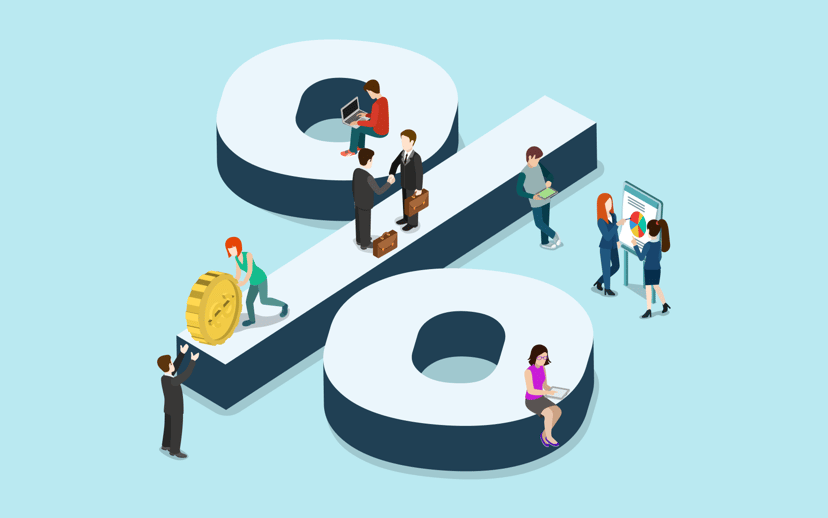Contents
What Happens When The Fed Increases Interest Rates?
3 minutes read
13 May 2024

If everything goes according to plan – the US Federal Reserve will hike interest rates for the first time in three years. The last time the US Federal Reserve hiked interest rates was back in December 2018. Since then, slowing economic growth and the pandemic forced the world’s largest central bank to drive rates back down to zero.
With things slowly heading back to normalcy, the Fed now wants to reverse back to the more borrow and lend their excess reserves to each other overnight. Currently, the Federal Funds Rate is 0% to 0.25%. This means that if banks lend their excess cash to other institutions from their reserves, they will charge a rate of interest within this range.
Why Are Interest Rates Cut Or Hiked?
In an economic slowdown, the central bank cuts interest rates to boost economic activity and growth. The intention is to reduce the cost of borrowing so that people and companies are more willing to invest and spend. With reduced borrowing costs, businesses take more loans, hire more people and expand production. The logic works in reverse when the economy is hot and booming.
What Happens When The Fed Raises Rates?
The main reason why the Federal Reserve increases interest rates is to increase the cost of credit throughout the economy.
As financial institutions themselves have to pay a price for borrowing money, an interest rate hike means it will cost them more to borrow the same amount. To cover for that, they will increase the rates at which they lend money to their customers. As the cost of borrowing rises, a customer will have to pay more to repay his debt, thereby reducing his purchasing power. Higher expenses would mean less disposable income in the hands of the customers, thereby reducing the revenue and profits of corporations.
Let’s simplify this with the help of an example:
Assuming that a bank has offered a loan worth $500K to an individual for a period of 30 years. As of date, the rate of interest for a 30-year fixed-rate loan stands at 3.75%. At the end of 30 years, the individual would have paid a sum of $833K, with $333K counting as interest. Calculating it on a monthly basis, the payment comes to around $2.3K per month.
Now, if the US Federal Reserve raised interest rates by 1% before the individual took the loan, the interest rate would rise to 4.75%. As a result of that 1% increase, the same individual will now have to repay $938K, of which $438K would be interest payment. The monthly EMI would also rise to $2.6K from the previous $2.3K.
In case such an event of higher interest rates occurs, the individual or the family would delay making the purchase they had planned or opt for a smaller loan amount to minimize their monthly installment.
Aside from loans, the Fed increasing interest rates also impacts stocks, bonds, credit card repayments, and many other facets of the economy.
Impact On Stock Market
Back in 2013, when the US Federal Reserve announced financial tightening, it resulted in enormous capital outflows from many emerging markets, including India. Equity markets across the world were roiled, and the event came to be regarded as the “taper tantrum.” Indian equities saw portfolio outflows worth $13B in just three months, between June to August 2013. The Indian Rupee depreciated by as much as 15% during that period, forcing the Reserve Bank of India to raise interest rates to stem the outflow.
Impact On Bonds
Bond prices and interest rates have an inverse relationship. As interest rates rise, bond prices fall. The longer the bond’s maturity, the more it is likely to fluctuate per the change in interest rate. Once interest rates begin to rise, newly issued securities by the government have a corresponding increase in rates. Treasury Bills and Bonds then come to be seen as safer bets as the risk-free return rate goes higher. As a result, investors move money out of other avenues as other assets become less attractive in terms of yield differential.
Impact On Savings Accounts
Higher interest rates may not be the best news for borrowers, but there cannot be better news for savings account holders. That’s because the Federal Funds Rate is also a benchmark for deposit account annual percentage yields – meaning the total interest one earns on savings bank deposits. Higher rates would mean that the interest earned on the savings account, deposit certificates, and money market accounts also rise.
The Fed hasn’t begun to raise rates yet, but it certainly is on course to do so. With inflation being at the highest in 40 years, a rate hike (s) should come as no surprise.
Access 4500+ US Stocks and ETFs with Winvesta
Get an account in minutes and start investing as soon as today
Get StartedAll content provided by Winvesta India Technologies Ltd. is for informational and educational purposes only and is not meant to represent trade or investment recommendations. Remember capital is at risk. Terms & Conditions apply.

Contributed by Prateek Jain
He is the Co-founder & President of Winvesta. Before Winvesta, Prateek worked at Deutsche Bank for 11 years



